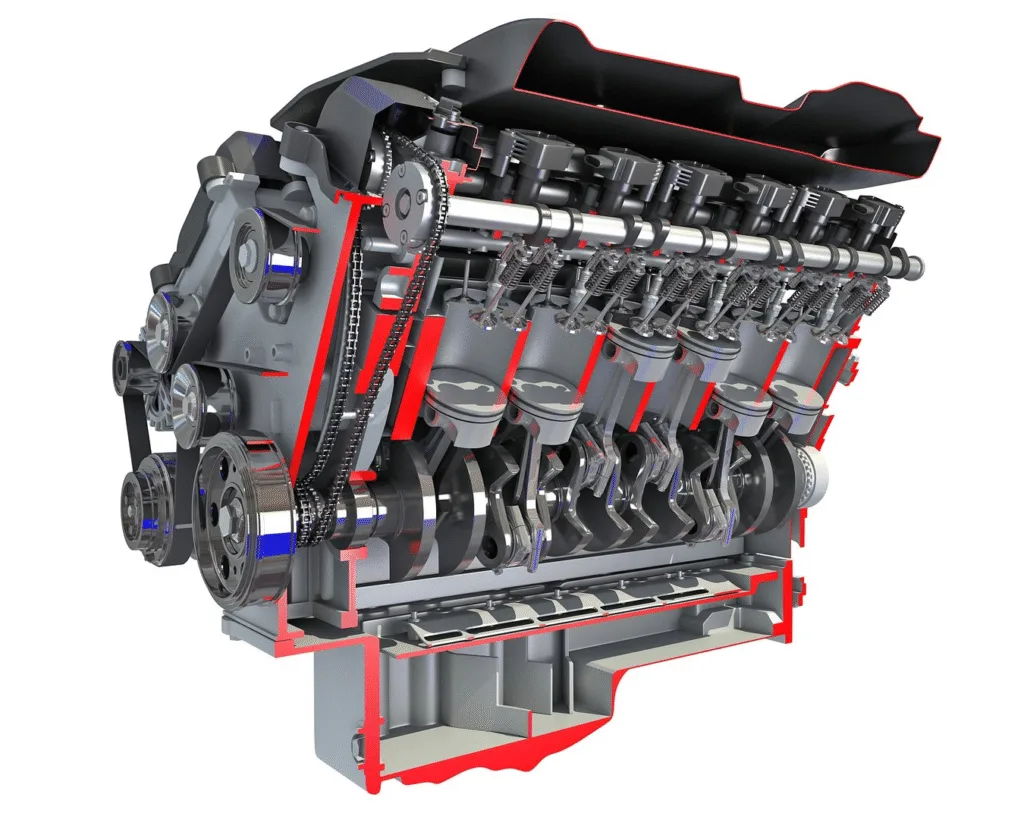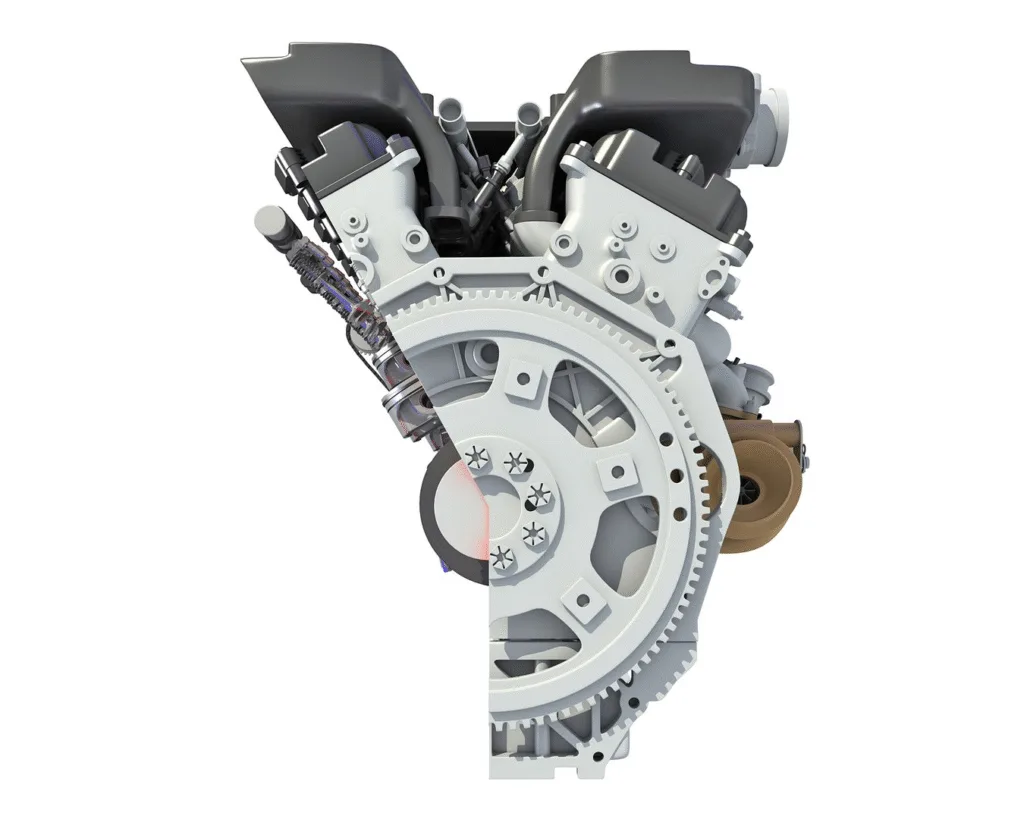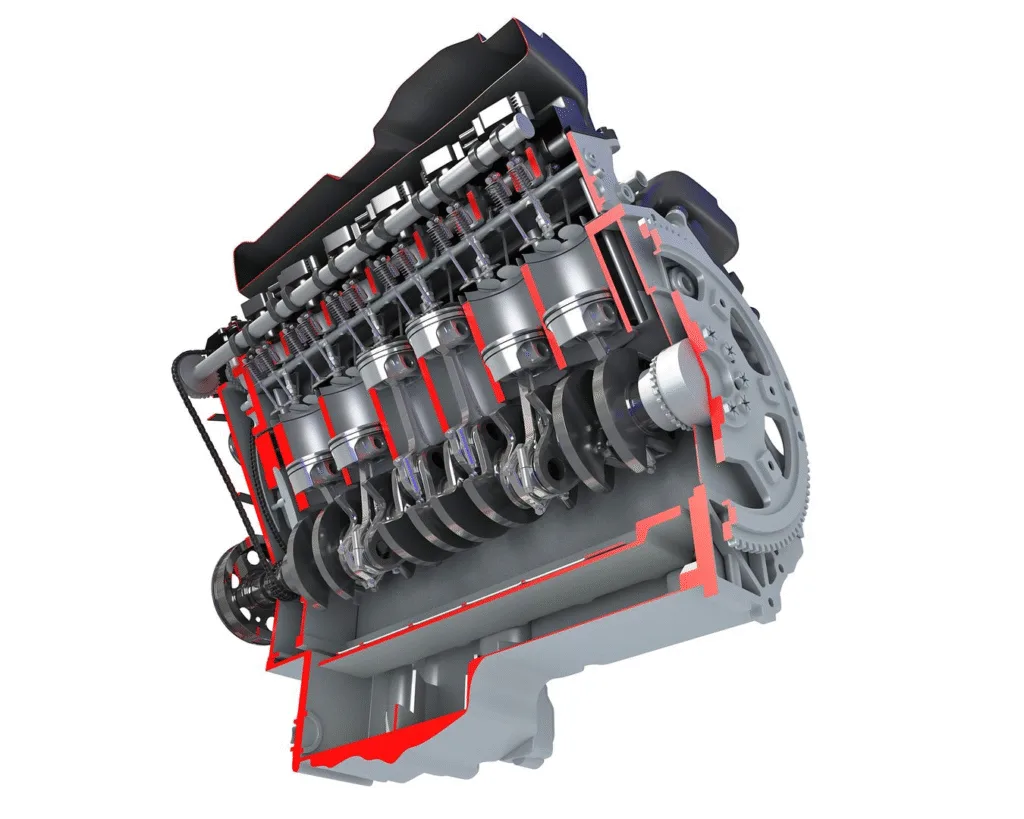Creating a Precision Engine Cut-Section from High-Polygon CAD Data: A Behind-the-Scenes Look
At [88Cars3d], we specialize in turning complex automotive CAD data into powerful visual stories. In one of our recent projects for an automotive client, we were tasked with creating highly detailed cut-section renders of an engine model — a technically challenging yet rewarding journey.
The Challenge: Managing Extremely High-Polygon CAD Data

Our client provided high-polygon CAD files with exceptional detail. While the quality of the data was excellent, it presented a unique challenge:
how to create clean, sharp engine cut sections without crashing or overloading the software.
We were operating with limited software licenses — having access only to Autodesk Maya and Pixyz Studio. Managing millions of polygons effectively required creative problem-solving.
Initial Attempt: Maya and the Limits of Traditional Workflow
We first attempted to process the engine model directly inside Maya. However, due to the very high polygon count, Maya struggled to calculate accurate cuts and became extremely slow and unstable during Boolean operations.
This meant we had to look beyond traditional cutting tools.
The Breakthrough: Using Pixyz Studio’s “Saw Tools”

Exploring Pixyz Studio, we discovered the “Saw Tools” — a feature designed to handle complex geometries and generate clean, sharp cut edges without overwhelming the system.
Using Saw Tools, we managed to perform precise open cuts on the dense mesh, maintaining sharpness and avoiding mesh artifacts.
However, Saw Tools only produced open cuts; we still needed solid section surfaces to close the geometry for rendering.

Completing the Section: Cut Section Preview and Final Touches
To create the missing section surfaces, we utilized Pixyz’s Cut Section Preview tool. This allowed us to generate closed section surfaces that matched perfectly with the Saw cut geometry.
After exporting the cut parts, we re-imported everything into Maya, carefully merging the cut sections with the original mesh.

For the final render:
- The section surfaces were given a shaded material.
- The remaining visible engine parts were textured and shaded to highlight their details.
The end result was a highly realistic cutaway render, balancing both engineering accuracy and visual storytelling.
Final Thoughts
This project reinforced the importance of choosing the right tools and adapting workflows when dealing with highly detailed CAD data.
By combining Pixyz Studio’s specialized tools with Maya’s powerful shading and rendering capabilities, we were able to deliver an outstanding visual output under challenging conditions.
At [Your Website/Studio Name], we pride ourselves on finding creative, efficient solutions to complex 3D visualization challenges — ensuring our clients always receive the highest quality results.

- Title Tag: Creating Engine Cut-Sections from High-Polygon CAD Data with Pixyz and Maya
- Meta Description: Discover how we created precision engine cutaway renders using Pixyz Studio and Maya, overcoming challenges with high-polygon CAD data.
- Tags: automotive visualization, CAD cut section, Pixyz Studio, Autodesk Maya, 3D rendering, engine cutaway, high polygon models
